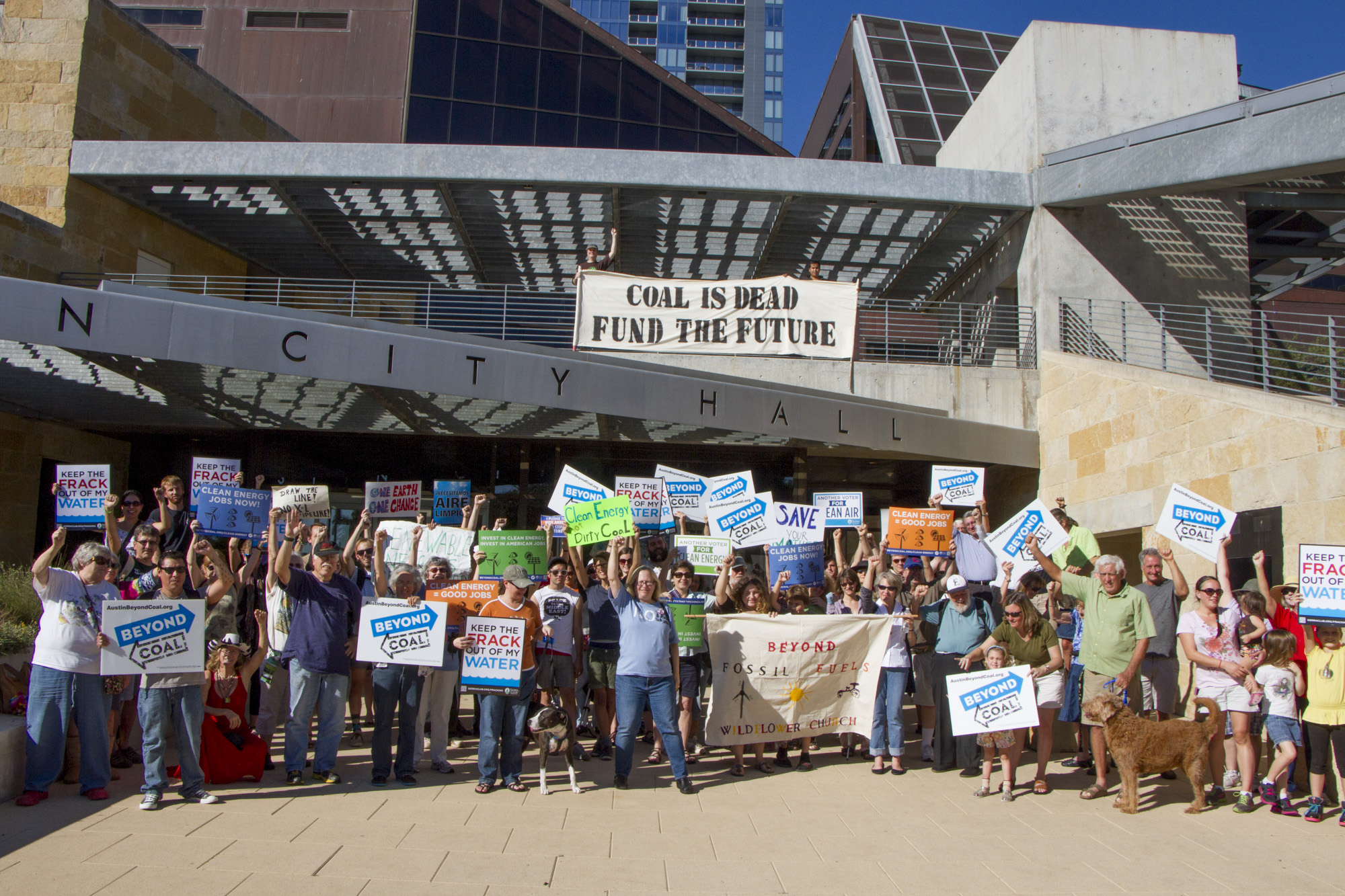“Coal is dead. Fund the future.” This was the message from the Sierra’s Club’s Dave Cortez at Austin City Hall this Saturday. On a blue bell Saturday afternoon, around 75 Austinites gathered on the steps of City Hall for a ra lly with nationally organized roots.
lly with nationally organized roots.
A national campaign organized under the umbrella of the environmental group 350.org brought together a diverse set of organizations on Saturday. Members of the Sierra Club, 350.org, local churches, and even local political organizations came together with common ground: Opposing the Keystone XL pipeline and demanding the city of Austin make use of clean energy technologies and move away from fossil fuels.
Mr. Cortez and Chris Wilson of the Austin Beyond Coal team played a leadership role at the rally and had special concern for the future of the Fayette Coal plant, which is partially owned by the City of Austin. The plant currently generates around 450 megawatts for the city producing power for nearly half a million homes.
In recent conversations with city council members, there remains on ongoing discussion for selling the Fayette plant or converting it to use natural gas. With this single plant emitting 75% of Austin Energy’s carbon, selling the plant may seem like a victory for the Sierra Club and local environmental groups.
Not so, says Mr. Cortez. The Sierra Club remains focused on the net environmental impact of any decision the city makes. Selling the coal plant to an outside investor would likely result in running the plant harder and emitting more CO2 to guarantee the return on investment for the new owners. Mr. Cortez made it clear to the audience that the only option should be permanently shuttering the portion of the plant owned by the city of Austin.
“A diverse mix of energy efficiency, distributed and utility-scale solar, and cheap wind backed up by gas-fired peaker plants will allow the City to replace our portion of the generation from Fayette while supporting a thriving Texas clean economy,” said Cortez. “Council must decide whether they want to wash the City’s green hands clean by selling, or whether they want to listen to the thousands of Austinites demanding a legacy reduction in our contribution to global climate disruption.”
Shuttering one unit at the Fayette plant would go a long way toward meeting Austin’s Climate Protection Plan. This plan was set forward in 2007 and has the goal of reducing the utilities CO2 emissions to 20% below 2005 levels by 2020. This ambitious target has won the city national recognition. In February of this year, Austin became the first city to win the Climate Leadership Award from the Environmental Protection Agency. According to the city’s website, 23 city departments currently have goals related to implementing the carbon protection plans. The city says that it is on pace to meet or exceed all of these goals by the 2020 deadline.

